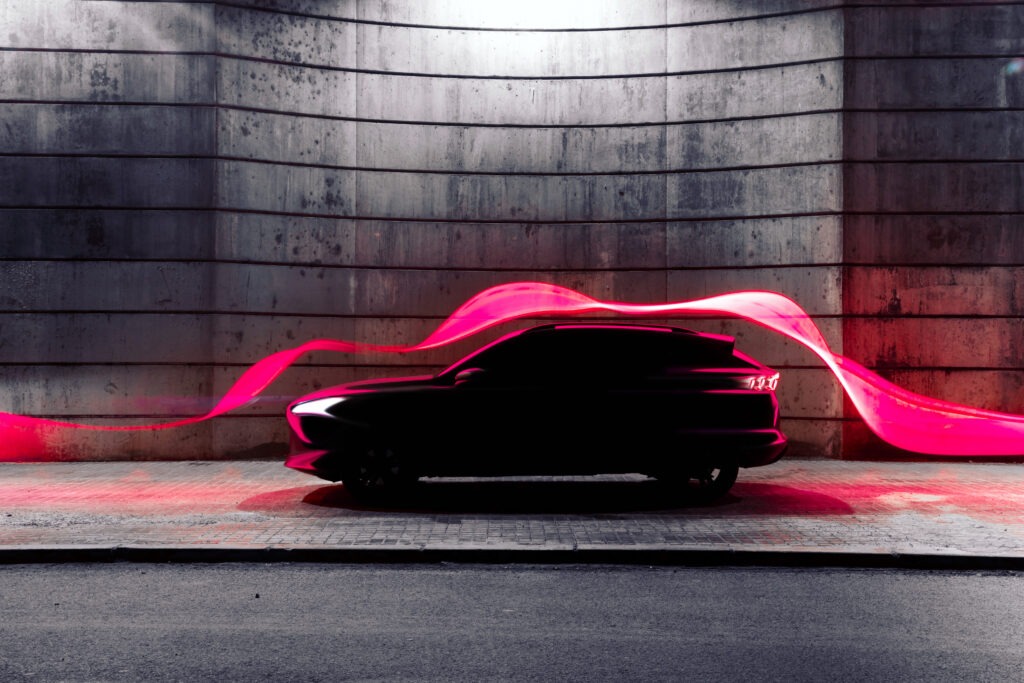BEVs account for quarter of Chinese new-car market in June
21 August 2023

China recorded over 700,000 electric vehicle (EV) sales in June, up 28% year on year. This pushed the year-to-date tally over 3.2 million units. José Pontes, data director at EV-volumes.com, considers the market’s electrification.
With another great performance, EVs took a 38% share of the Chinese new-car market in June. Battery-electric vehicles (BEVs) alone accounted for 25% of registrations in the country, with the remaining 13% consisting of plug-in hybrids (PHEVs).
In the first half of the year, EVs took a 35% share of the new-car market, with BEVs making up 24% alone. Considering the current growth rate, plug-in vehicles can be expected to account for 40% of China’s registrations by the end of 2023.
Looking at the country’s overall market, EVs occupied four out of the five top-selling spots in June. Meanwhile, other markets celebrate when just one EV makes it into the top 10 best-sellers list. But not all segments of the Chinese market are electrifying at the same rate.
While city cars (A-segment), subcompacts (B-segment), and the midsize category (D-segment) are heavily electrified, compacts (C-segment) and full-size (E-segment) models still have some work to do. For example, the E-segment is still dominated by premium German brands, despite the continued reliance on internal-combustion engines.
Price cuts pay off
With 51,471 registrations in June, the Telsa Model Y was the most popular model in China’s entire automotive market. It seems the price cuts have paid off for the US crossover, with the midsize model able to run at the same pace as the best of the BYD pack.
To compensate for the peaks and valleys Tesla experiences month to month, sales figures can be assessed on an average quarterly basis. With this approach, the Model Y finished the second quarter on a 36,500 unit-a-month average, a great result for a foreign model in China.
The BYD Song claimed second place in June, scoring 43,288 registrations. Its future success will be determined by its competitors, especially from those inside BYD. The Frigate 07 PHEV is currently the only model to tick this particular box, but the Song L and Denza N7 are both set to land this year.
The regular Song sits at the lower end of the price spectrum, followed by the Frigate 07 and Song L in the mid-priced range, then the upmarket Denza N7. But this could be too much competition from inside BYD’s midsize SUV portfolio.
Price cuts, which continue to sweep the local market, will also determine the success of the Song. The model needs to clock in 40,000 sales a month to continue leading the competitive Chinese market. Its monthly average currently sits at 43,000 units a month.
The third-place BYD Qin Plus benefitted from a recent refresh and price cut, with the midsize model reaching 42,086 registrations in June. With prices starting at ¥100,000 (approximately €12,500), demand was up, despite strong internal competition from the Seal and the Destroyer 05.
BYD’s lower-priced midsize sedan can be expected to keep posting strong results, at the cost of its most expensive siblings. It should have no problem keeping its direct competitors, the Tesla Model 3 and GAC Aion S, at a safe distance.
With 30,012 registrations in June, the BYD Yuan Plus performed as well domestically as it did abroad. This growth trend is likely to continue internationally as the model’s rollout continues, but there are challenges to its ongoing domestic success. This includes the current price war in China as well as increasing competition, such as the upcoming Zeekr X. This will likely push BYD to focus its crossover production on export markets, where competition is less extreme and margins are higher.
In fifth, the BYD Dolphin scored 26,408 registrations. The model arguably used to lead the small hatchback category, as competitors sold far fewer units. But this is being tested with the arrival of the Wuling Bingo, which clocked a record 19,740 registrations in June. Once the Bingo crosses the 20,000 units-a-month threshold, it could give the Dolphin a run for its money. The race could become even more interesting should the upcoming JAC Yiwei 3 hit the ground running.
GAC’s Aion S and Y continued to impress in June, with the sedan ending the month in eighth and the crossover in ninth. The 10th-place Wuling Bingo scored a record 19,740 sales, beating its smaller sibling the Wuling Mini EV.
The 11th-place BYD Seagull recorded 16,560 registrations. This was a great performance considering the model has only been on the market for three months. There is potential for the Seagull to fly into the top five in September.
The Li Auto L7 came in 14th with 13,107 registrations, marking another record month for the new full-size, 5-seat SUV. The startup has set itself bullish sales targets of 400,000 units this year, 800,000 in 2024 and 1.6 million in 2025. For these targets to be met, the midsize L6 – due to be launched sometime next year – will be a critical part of the puzzle.
Meanwhile, the 16th-spot Denza D9 hit a record 11,058 units, the 17th-place BYD Destroyer 05 had its first five-digit performance (10,222 units), and Geely’s Galaxy L7 PHEV landed in 18th. While this could appear promising for Galaxy, Geely has a long line of models which started strong but dropped into irrelevance a few months later.
In Great Wall’s stable, the ORA Good Cat had 7,658 registrations, its best score in a year. The Wey premium brand delivered 5,506 units of its new Blue Mountain flagship SUV, in only its third month on the market. With a 45kWh battery, extended-range technology, and full-size length, the carmaker is hoping to capture some of Li Auto’s magic.
Leapmotor’s C11 midsize SUV hit another record performance, with 8,934 registrations, likely aided by the introduction of a range-extended version. Meanwhile, FAW has shown signs of life, with the Bestune NAT people carrier reaching 5,387 registrations, its best score in 18 months.
BYD top two
In the first half of 2023, the BYD Song performed well above its competition, while the runner-up BYD Qin Plus resisted the peak sales of the Tesla Model Y. Off the podium, the Wuling Bingo jumped four positions to 13th. The small EV hopes to reach higher standings in July.
The Li Auto L7, which joined the table in June, made it to 17th place. That makes three Li Auto models in the top 20 between January and June. Apart from BYD, no other brand can boast that many high-achieving models, and it speaks volumes about the startup’s current strength.
Stable market share
Examining brand performance, BYD’s leading market share remained roughly stable at 35.3% in June, down from 36% in May. Meanwhile, second-place Tesla grew its share slightly from 8.7% to 9.1%. Third-placed GAC Aion held on to its 6.5% share, while SGMW’s performance was hurt by the Wuling Mini EV’s sales drop, with its share falling slightly to 5.8%.
Fifth-place Li Auto kept rising in June, taking a 4.3% market share. This three-year-old startup is already reaching significant sales levels and looks set to become a force to be reckoned with. Li Auto’s growth potential, price points, and margins make it one of the more promising EV startups. To put the company’s growth into context, in 2015, three years after the Model S launch, Tesla celebrated a record 50,000 unit sales a year. At the same age, Li Auto sold more models in two months.
Comparing the current top-sellers with those from a year ago, BYD (up 8.4%), Tesla (up 0.8%) and GAC (up 2.3%) are on the rise. Meanwhile, SAIC’s sales bleed has become increasingly apparent as the company lost a 4% share compared with June 2022.
Reviewing OEMs with brands grouped, BYD lead comfortably with a 37% share of the market, while second-place Tesla (9.1% share) also remained stable. SAIC remained in the red, meaning the new Wuling Bingo was not enough to stop the sales bleed. The OEM was down from the 7.6% share it held in May to 7.4% in June, putting it third.
But in fourth, GAC (6.9%) crept closer to the podium, while fifth-place Geely–Volvo stayed stable with a 5.5% share, up 0.3% on May. Sixth-place Changan took a 4.5% share, meaning Geely can rest on its laurels for now while it prepares a way to surpass GAC and maybe even SIAC by the end of the year.



